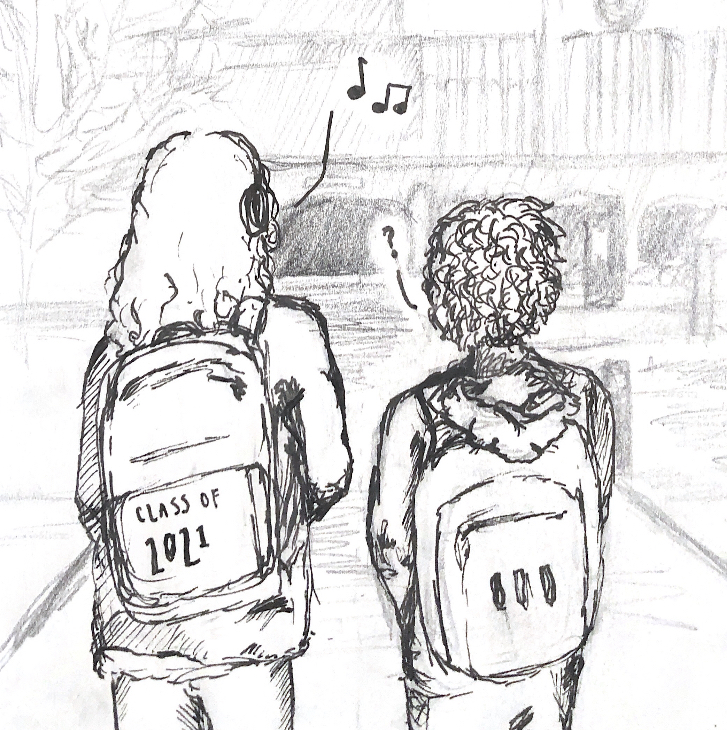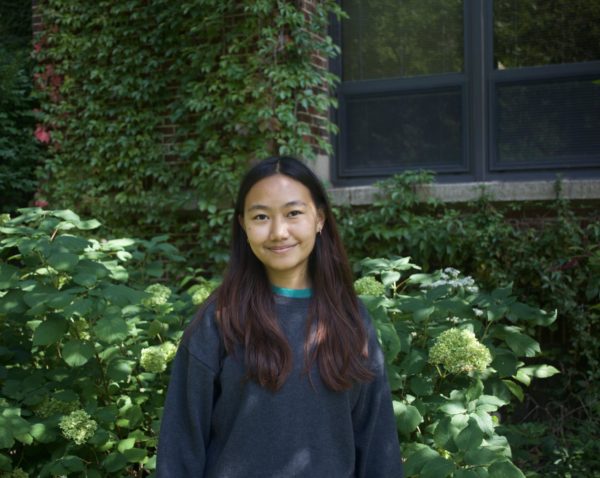Hybrid learning offers unique experiences and considerations for freshmen, seniors
April 26, 2021
On March 13, 2020, ETHS announced that the school would be closed for two weeks due to COVID-19. However, two weeks turned into an indefinite period, as the future of the return to normalcy looked unclear. Since then, ETHS students have stayed inside their homes, completing coursework virtually. Over the summer, students lacked social interactions with friends and families, and even then, health precautions hung over their heads. As COVID-19 cases rose, the notion of returning to school in-person seemed like a distant possibility. A year later, on March 18, ETHS informed families that the in-person hybrid model was to officially begin on April 14, leaving students with a difficult decision to make; whether or not the pathway to normalcy and added social interaction outweighed the increased exposure to COVID-19 and adjustment to returning physically in the building.
While many other public high schools in the surrounding area have offered an in-person option prior to ETHS, some students are trusting that the additional planning time will lead to an overall more organized and safe return.
“The fact that ETHS didn’t immediately rush into reopening makes me more hopeful that they have taken the time to fully prepare, so that all staff and students are as safe as possible,” freshman Mira Needlman says, who opted into in-person hybrid learning and made her way back to school on April 14.
Meanwhile, senior Grace Sherman has mixed feelings about ETHS reopening plan.
“I do think ETHS should have opened up a lot sooner—at least to students who have a difficult home or e-learning situation,” Sherman says. “It took ETHS way too long to offer said students an in-person option. When it comes to returning to in-person classes, I’m honestly not sure where I stand. While I would have loved to return months ago, I’m not sure how safe it would have been.”
In Needlman’s case, she has three more years to feel a part of the ETHS community; therefore she felt less of a need to rush into reopening without a proper plan in place. However, Sheman explains how seniors were more likely to feel a sense of urgency, in hopes of taking advantage of the short amount of time they have left to receive the closure they deserve.
With an additional thousands of students and millions of square feet to cover on a daily basis, some freshmen have felt overwhelmed and anxious throughout the reopening process. While students have become familiar with navigating school from their homes, many will now have to pivot, being forced to not only deal with these standard worries but also those that have stemmed from the pandemic.
That said, Needlman and freshman Kathleen Kerr are optimistic that this “step in the right direction” will come in the form of greater involvement in the ETHS community and overall improved mental health.
“My experience learning virtually began to feel repetitive and lonely. As a student, being around other people helps me succeed in terms of my education,” freshman Kathleen Kerr says.
Even though the timing of ETHS’ return has caused freshmen and seniors to form a wide variety of opinions, all of the students that have opted-in for hybrid, regardless of their grade, can agree that their experience learning behind a screen for such a long period of time played a large role in their decision.
“Working from home, I became easily distracted with my thoughts and had to give extra attention to what I was learning,” Kerr explains.
While some students at ETHS have approached the hybrid model as an opportunity they can’t pass up, others believe these changes do not make up for the increased risk of exposure to COVID-19 in the building.
Freshman Elisa Hernandez has chosen to remain fully virtual for multiple reasons.
“Personally, I feel that it would have been ideal to finish the school year remotely, with optional in-person experiences,” Hernandez explains. “Both students and teachers have adapted to the remote system, so changing it so late in the year not only affects students but teachers as well. They have to reevaluate their systems and schedules for only [six] weeks of in-person experience.”
Although six weeks of in-person courses does not sound like much, many students have decided to jump the bandwagon and take advantage of this opportunity.
“I have anxiety and depression which has been significantly worse due to the prolonged isolation. Even if I only get to be in school four times before I graduate, being around other people will be beneficial for my mental health,” senior Kaitlynn O’Connor explains.
Students’ reasons for opting in for hybrid learning are different. Yet, their choice is a result of their virtual experience so far.
“The main things that influenced my choice about opting into the hybrid method at ETHS were getting to have more interaction with others—even if that means behind a mask and being socially distant, getting to learn the school in some way before my sophomore year and getting the chance to further separate my home life and my school life by creating more of a structured schedule and routine,” Needlman explains.




















